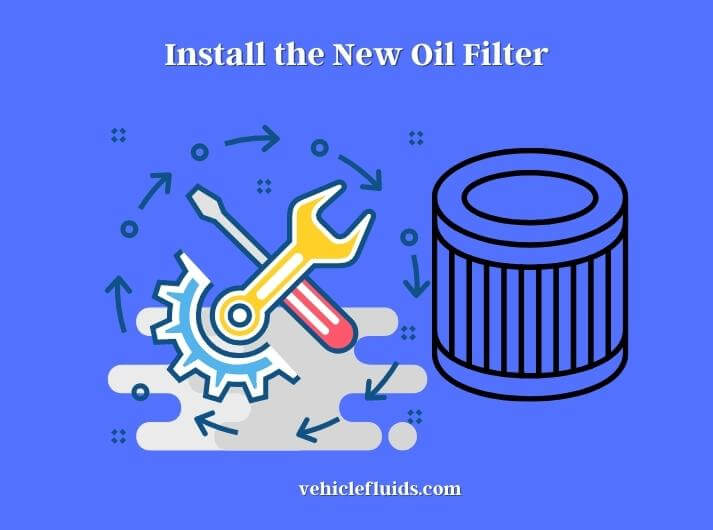Your car’s engine is made up of many moving parts, and it needs oil to keep everything running smoothly. Over time, the oil in your engine will break down and become less effective at lubricating and protecting your engine. That’s why changing your car’s oil is a crucial part of maintaining your vehicle’s health. This guide is designed for those who have never changed their car’s oil before, and need a basic understanding of the process.

Before we begin note that you should always consult your owner’s manual or a professional mechanic before changing your car’s oil. Different vehicles may require different types of oil, filters, and specific procedures, so it’s always necessary to do your research beforehand.
Step 1: Gather Your Supplies
Changing car oil is a major part of maintaining your vehicle. It’s essential to change your car oil regularly to keep the engine running smoothly and efficiently. If you’re a beginner or a “dummy” when it comes to cars, changing the oil can be intimidating. With the right tools and instructions, it’s a simple process that anyone can do.
| Oil: | You’ll need to purchase the correct type of oil for your vehicle. Make sure to purchase enough oil for a complete oil change. |
| Oil Filter: | The oil filter traps dirt, debris, and other particles from the oil, preventing them from entering the engine. Make sure to purchase the right type of filter for your vehicle. |
| Drain Pan: | You’ll need a drain pan to catch the old oil as it drains from the engine. Make sure the pan is large enough to hold all the oil. |
| Oil Filter Wrench: | This tool is used to remove and install the oil filter. Make sure to purchase the correct size wrench for your filter. |
| Funnel: | A funnel is useful for pouring new oil into the engine without spilling. |
| Rags or Paper Towels: | You’ll need these to clean up any spills or messes. |
| Gloves: | Gloves will help protect your hands from hot oil and other hazards. |
Make sure to gather all these supplies before you start. Use the right type of oil and filter for your vehicle to ensure optimal performance and longevity. Always consult your owner’s manual or a professional mechanic if you have any doubts or questions.
Step 2: Prepare Your Vehicle
Before you start changing the oil in your car, you need to prepare your vehicle. Here are the steps to prepare your vehicle to change car oil for dummies:
Park Your Car on Level Ground
Make sure to park your car on a level surface. This will ensure that the oil drains correctly and you can add the correct amount of new oil.
Turn Off the Engine
Turn off the engine and let it cool down for a few minutes. Hot oil can cause burns, so it needs to wait until the engine is cool enough to touch.
Locate the Oil Filter and Drain Plug
The oil filter and drain plug are located underneath the car. Consult your owner’s manual if you’re not sure where they are located.
Open the Hood
Open the hood of your car and locate the oil cap. Removing the oil cap will allow air to circulate and make it easier for the oil to drain out.
Before preparing to start your car for an oil change, you can ensure that the oil change process goes smoothly. Make sure to park on level ground, turn off the engine, locate the oil filter and drain plug, and open the hood before you start. This will help you save time and avoid any potential accidents.
Step 3: Drain the Old Oil
Here’s how to do it for dummies:
Locate the Oil Drain Plug:
The oil drain plug is typically located on the bottom of the engine. Consult your owner’s manual if you’re not sure where it is.
Place the Drain Pan Underneath the Plug:
Slide the drain pan underneath the drain plug to catch the old oil.
Remove the Drain Plug:
Use a wrench to loosen the drain plug and then remove it by hand. Be careful not to lose the drain plug, as you’ll need it later.
Let the Oil Drain Out:
Allow the oil to drain out completely into the pan. This may take a few minutes, so be patient.
Replace the Drain Plug:
Once all the oil has drained out, clean the drain plug with a rag or paper towel and then replace it. Tighten the plug with your wrench.
Step 4: Install the New Oil Filter
Once you have drained the old oil, the next step is to install a new oil filter.

Locate the Oil Filter:
The oil filter is typically located near the drain plug on the bottom of the engine.
Remove the Old Oil Filter:
Use an oil filter wrench to loosen the old oil filter and then remove it by hand. Be careful not to spill any oil that may be inside the filter.
Prepare the New Oil Filter:
Before installing the new oil filter, lubricate the gasket with some fresh oil. This will help ensure a good seal and make it easier to remove the filter during the next oil change.
Install the New Oil Filter:
Screw the new oil filter onto the engine by hand. Once it’s snug, tighten it an additional 3/4 turn with the oil filter wrench.
Wipe Up Any Spills:
Use a rag or paper towel to wipe up any oil that may have spilled during the oil filter change.
Step 5: Add the New Oil
After you have installed the new oil filter, the final step is to add the new oil to your car.
- Determine how much oil to add: Consult your owner’s manual to determine how much oil to add. Make sure to use the correct grade of oil for your car.
- Remove the oil cap: Locate the oil cap on the top of the engine and remove it.
- Add the new oil: Use a funnel to pour the new oil into the engine. Pour slowly and carefully to avoid spills.
- Check the oil level: After adding the new oil, use the dipstick to check the oil level. Make sure the oil level is between the minimum and maximum marks on the dipstick.
- Replace the oil cap: Once you have added the correct amount of oil and checked the oil level, replace the oil cap and tighten it securely.
Make sure to add the correct amount and grade of oil and check the oil level to prevent damage to your engine. With these simple steps, you can change the oil in your car like a pro.
Step 6: Check for Leaks
After you have added the new oil to your car, the final step is to check for leaks.
- Start the engine: Start the engine and let it run for a few minutes. This will allow the oil to circulate through the engine and the oil filter.
- Turn off the engine: Turn off the engine and wait a few minutes for the oil to settle.
- Check for leaks: Use a flashlight to check around the drain plug and oil filter for any signs of leaks. Look for drips or puddles of oil underneath the car.
- Tighten the drain plug or oil filter if necessary: If you see any leaks, use a wrench to tighten the drain plug or oil filter. Be careful not to overtighten, as this can damage the engine.
- Recheck for leaks: Start the engine again and let it run for a few more minutes. Turn off the engine and check again for any leaks.
Bottom Line
Changing car oil may seem intimidating, but with the right tools and instructions, it’s a simple process that anyone can do. Regularly changing your car oil is critical to maintaining your vehicle’s performance and longevity.
This guide will help you how to change car oil for dummies, you’ll be able to keep your car running smoothly for years to come. Remember to always consult your owner’s manual or a professional mechanic if you have any doubts or questions.
You might also like:
